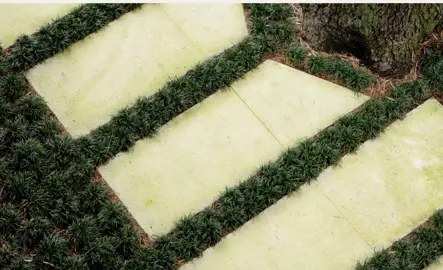
The Plant Company grows and sells thousands of Campanula plants throughout NZ. We pride ourselves on producing high quality plants and seeing the joy from our customers when they receive them. We do hope you enjoy them and support this NZ business that is passionate about plants.
Why? Our plants are in high demand due to our reputation for delivering high quality products at competitive prices. We may have these in production or be able to source these for you, so please feel free to contact us and our fantastic team will respond to your enquiry. Alternatively, we have a world class plant finder tool that you can use to help find alternative options.
Campanula alba features impressive flowers. Stems rise above the foliage to host showy and fragrant clusters of bell-shaped, white flowers through...
Campanula Bavarian Blue is a vigorous, evergreen perennial often used as a groundcover. It has purple-blue flowers which literally coat the plant...
Campanula Birch Hybrid, commonly known as the Dwarf Bellflower, is a vigorous, evergreen perennial renowned for its profusion of bell shaped...
Campanula Canterbury Bells Blue features impressive flowers. Stems rise above the foliage to host showy clusters of bell-shaped, blue flowers through...
Campanula Canterbury Bells Pink features impressive flowers. Stems rise above the foliage to host showy clusters of bell-shaped, pink flowers through...
Campanula Canterbury Bells White features impressive flowers. Stems rise above the foliage to host showy and fragrant clusters of bell-shaped, white...
Campanula EH Frost is a vigorous, evergreen perennial often used as a groundcover. It has white-blue flowers which literally coat the plant during...
Campanula EK Toogood is a vigorous, evergreen perennial often used as a ground cover plant. It has white and blue flowers which literally coat the...
Campanula latifolia is an herbaceous perennial grown for its pretty, bell shaped, pale purple-white flowers. These are borne from spring through...
Campanula muralis, commonly known as the Dalmation Bellflower, is an exquisite herbaceous perennial which is often used as a groundcover. It has...
Campanula Mystic Bells is an herbaceous perennial grown for its pretty, bell-shaped flowers. The blue and showy flowers are borne from late winter...
Campanula portenschlagiana is a vigorous, evergreen perennial often used as a groundcover. It has purple-blue flowers which literally coat the plant...
Campanula poscharskyana, commonly known as the Serbian Bellflower, is an exquisite herbaceous perennial which is often used as a groundcover. It has...
Campanula Resholdt's Variety is a vigorous, evergreen perennial often used as a groundcover. It features vivid blue flowers which coat the plant...
Adding colourful perennials such as Campanula Canterbury Bells to your garden delivers a vast range of benefits:
We have the largest variety of Canterbury Bell flower plants, and the right one for your space. Our Campanula plants have been selected to thrive in NZ’s climate. We stock only the highest quality plants, sourcing them locally and from NZ’s leading nurseries. Each plant is packed and transported with extreme care, ensuring it arrives to you in the same condition it was in when it left the nursery. If you are wanting to buy Campanula, shop with confidence from the best in the industry.
Most Campanula are perennial plants, meaning they come back every year. However, there are a few biennial and annual Campanula species. Perennial Campanula plants will often die back during winter and re-emerge in the spring.
The best time to plant Campanula is during spring, after the last frost has passed. This will give the plants time to establish themselves before summer. Dig a hole that is twice as wide as the root ball of the plant. Place the plant in the hole and backfill with soil, firming gently to remove any air pockets. Water the plant well and mulch around them to control weeds and retain moisture.
The easiest Campanula to grow in New Zealand is Campanula carpatica, also known as Carpathian bellflower. It is a perennial native to the Carpathian Mountains of Central Europe and is a popular choice because of its great aesthetics and ease to grow.
Campanula carpatica is relatively fast-growing and can reach 30 cm tall. It has dark green leaves and produces masses of bell-shaped flowers in summer and autumn that are blue, purple, pink, or white.
Campanula is the same as bellflower. There are over 300 species of Campanula, and they are found all over the world. Bellflowers are renowned for their bell-shaped flowers, which are blue, purple, pink, or white. They are often used in cut flower arrangements. Some of the most common bellflower species include:
Many Campanula species spread, either by rhizomes or by self-seeding. This can make them a good choice for groundcover or for adding to a mixed planting.
Many Campanula species can flower twice in a growing season. Campanula carpatica and Campanula persicifolia typically flower in spring and early summer, and then again in autumn. Campanula takesimana blooms continuously through summer and autumn.
Here are some tips for encouraging your Campanula plants to flower twice:
Most campanula varieties thrive in full sun or partial shade. As a guide:
Campanulas are perennials, meaning they come back year after year if properly cared for. They can live for many years, often 5-10 years or even longer. Some even spread and form larger clumps over time.
The best place to plant your campanula depends on:
1. Variety: Different campanula species have different needs. Some prefer full sun, while others thrive in partial shade or even full shade. Some prefer moist soil, while others tolerate drier conditions. Research the specific needs of your variety to ensure you plant it in a suitable location.
2. Sunlight:
3. Soil: Campanulas generally prefer moist, well-drained soil. Avoid planting them in areas with heavy clay soil that can hold water and cause root rot. Adding compost or other organic matter to the soil can help improve drainage and moisture retention.
4. Other factors:
Lobelia and campanula, both belonging to the Campanulaceae family, are often confused due to their shared bell-shaped flower characteristics. However, they have some key differences:
Flowers:
Growth habit:
Leaves:
Habitat:
Some additional notes:
Whether you need assistance finding the plant you’re looking for or you simply want to know more about who we are and what we do, we invite you to get in touch with us today. A member of The Plant Company team will get back in touch as soon as possible.


